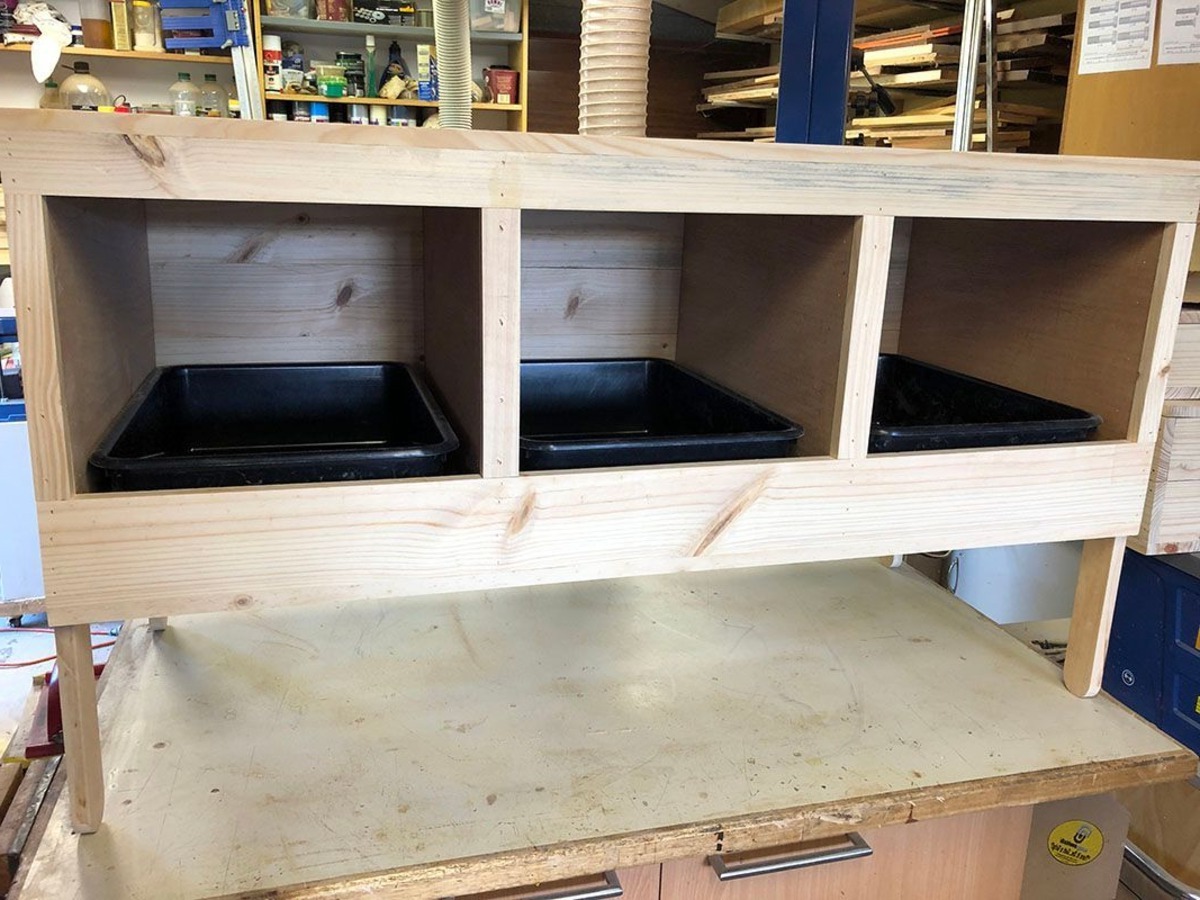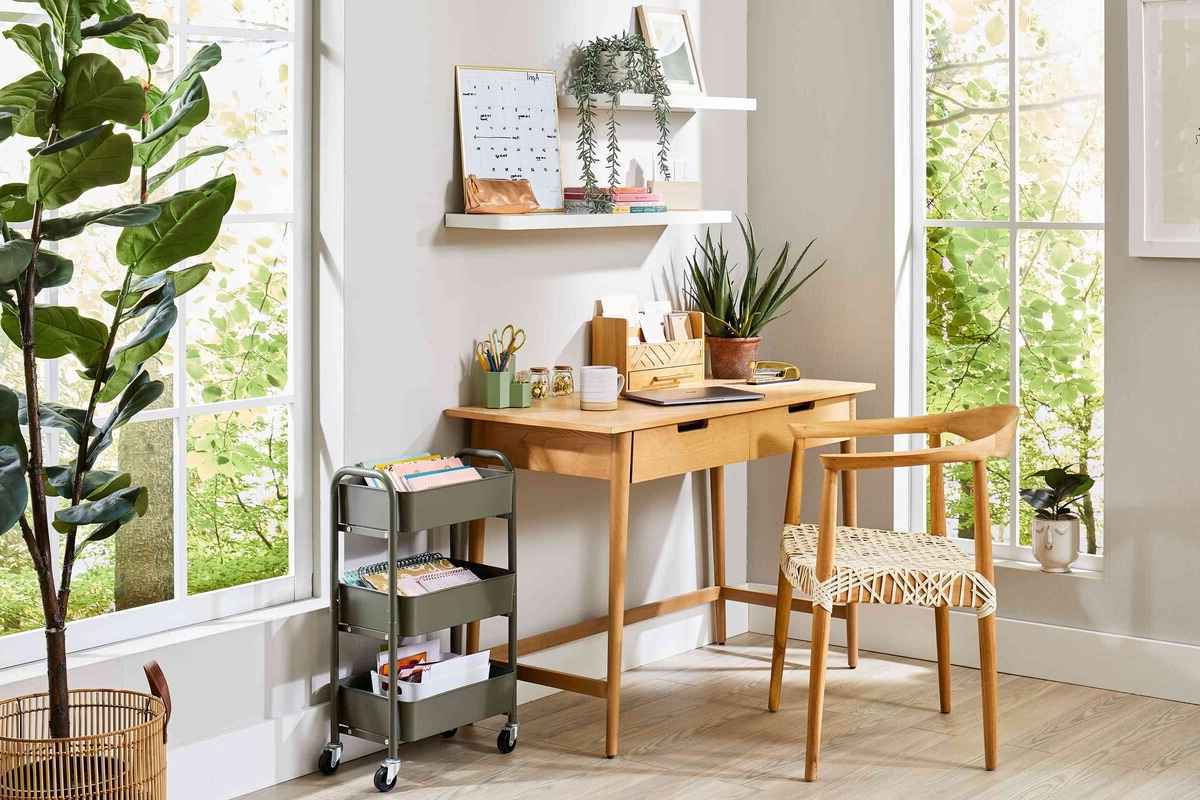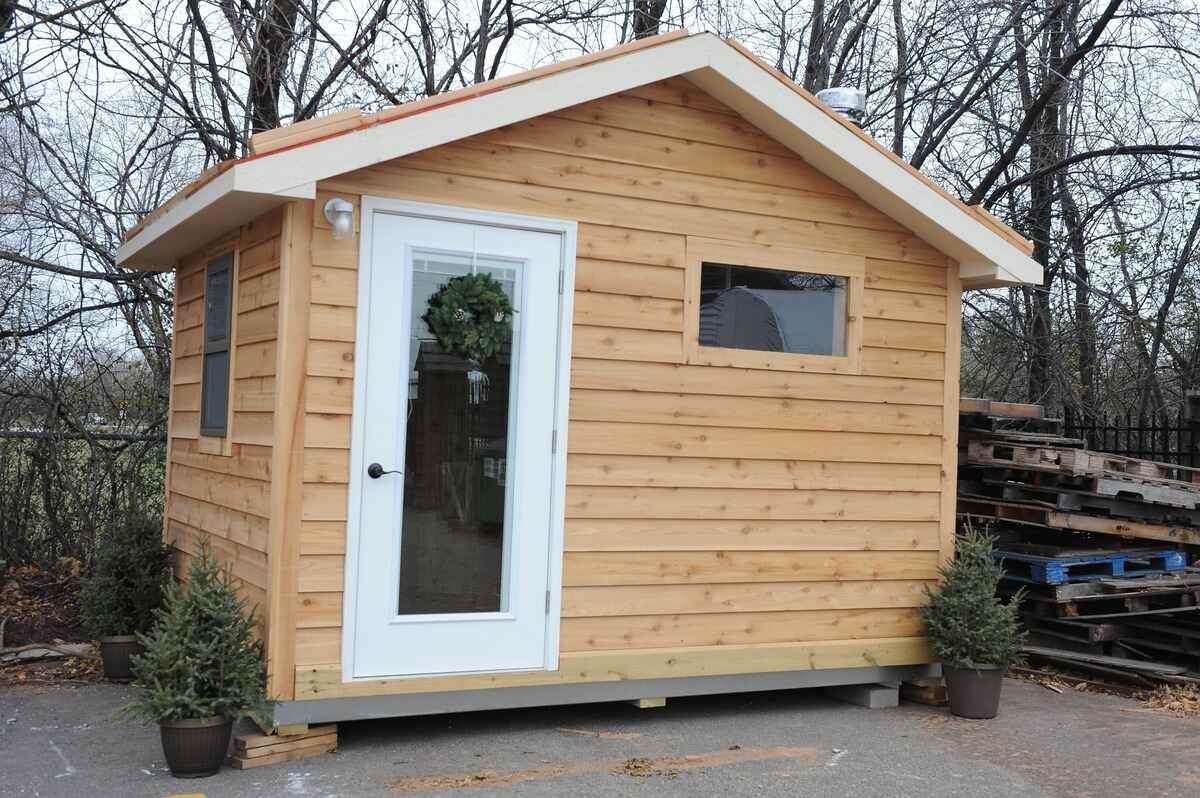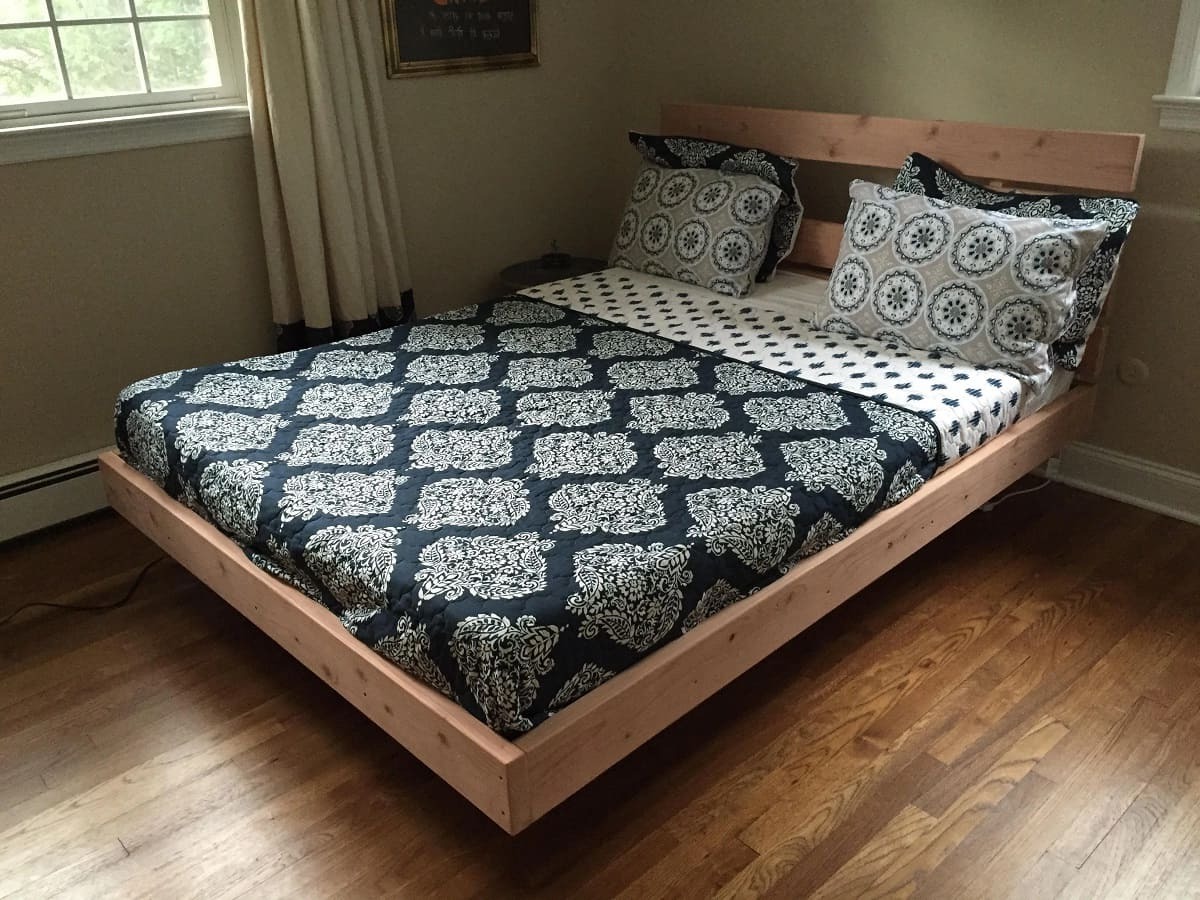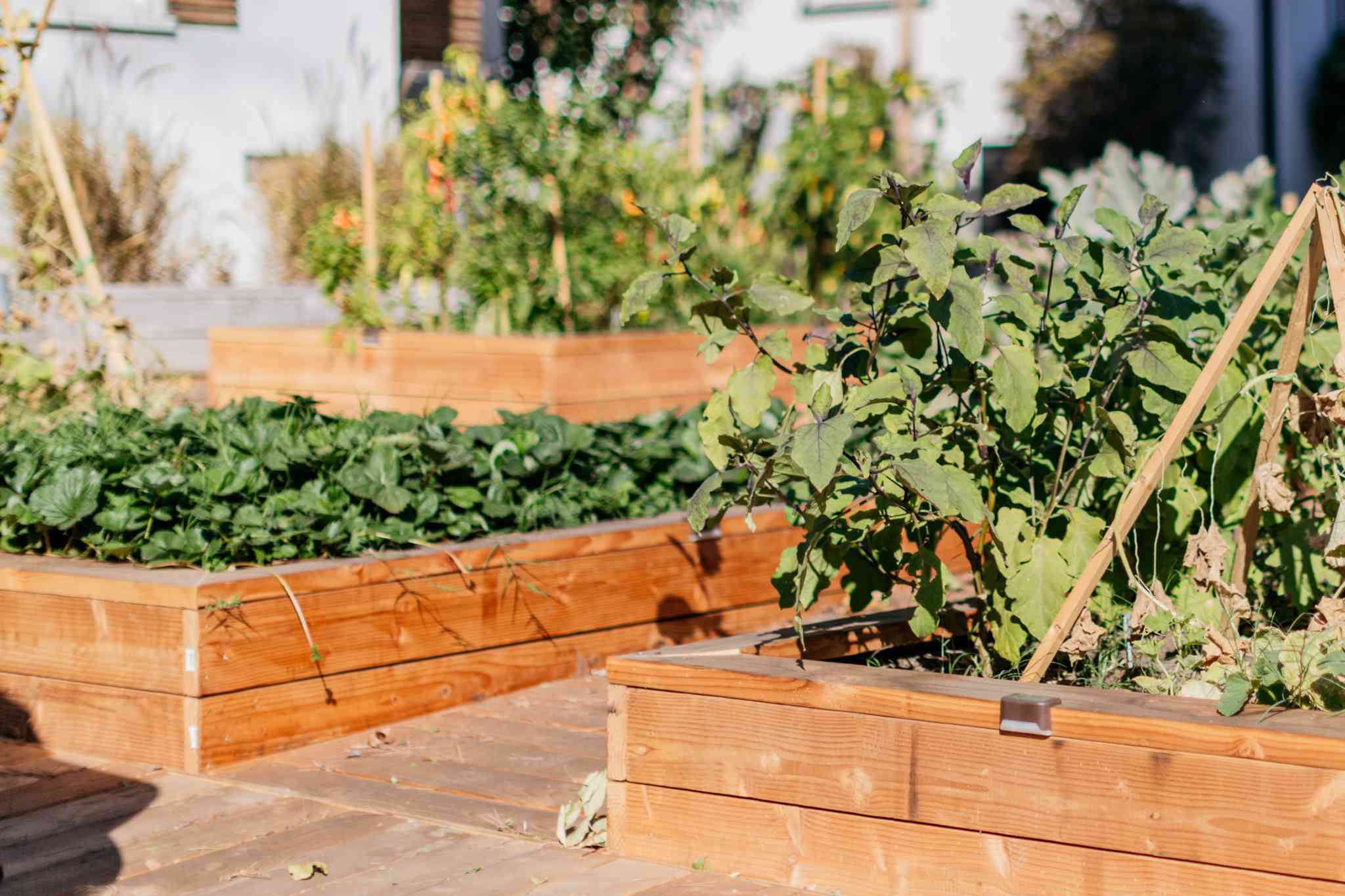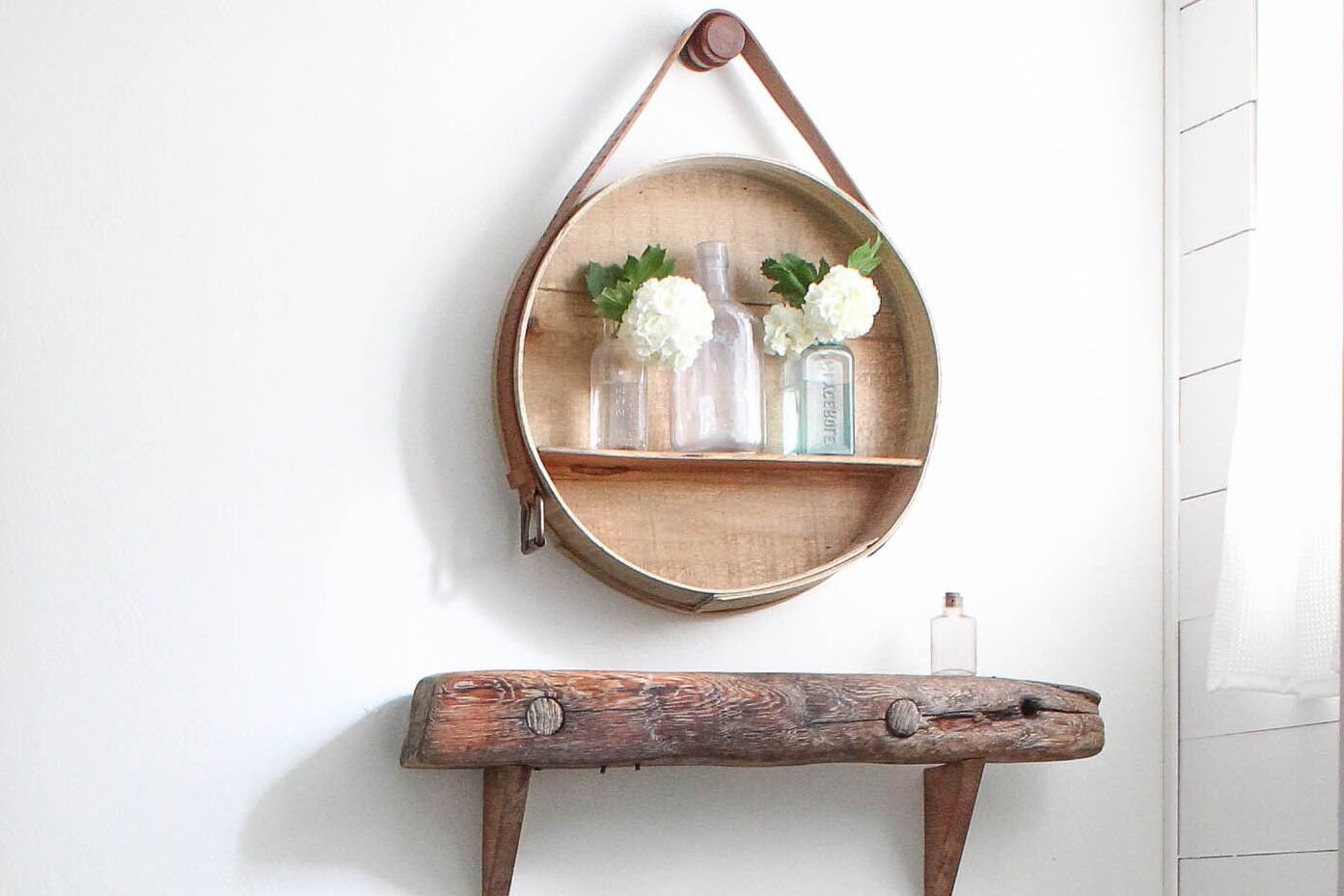Home>Create & Decorate>DIY & Crafts>How To Create Weighted Blankets For Sensory Relaxation
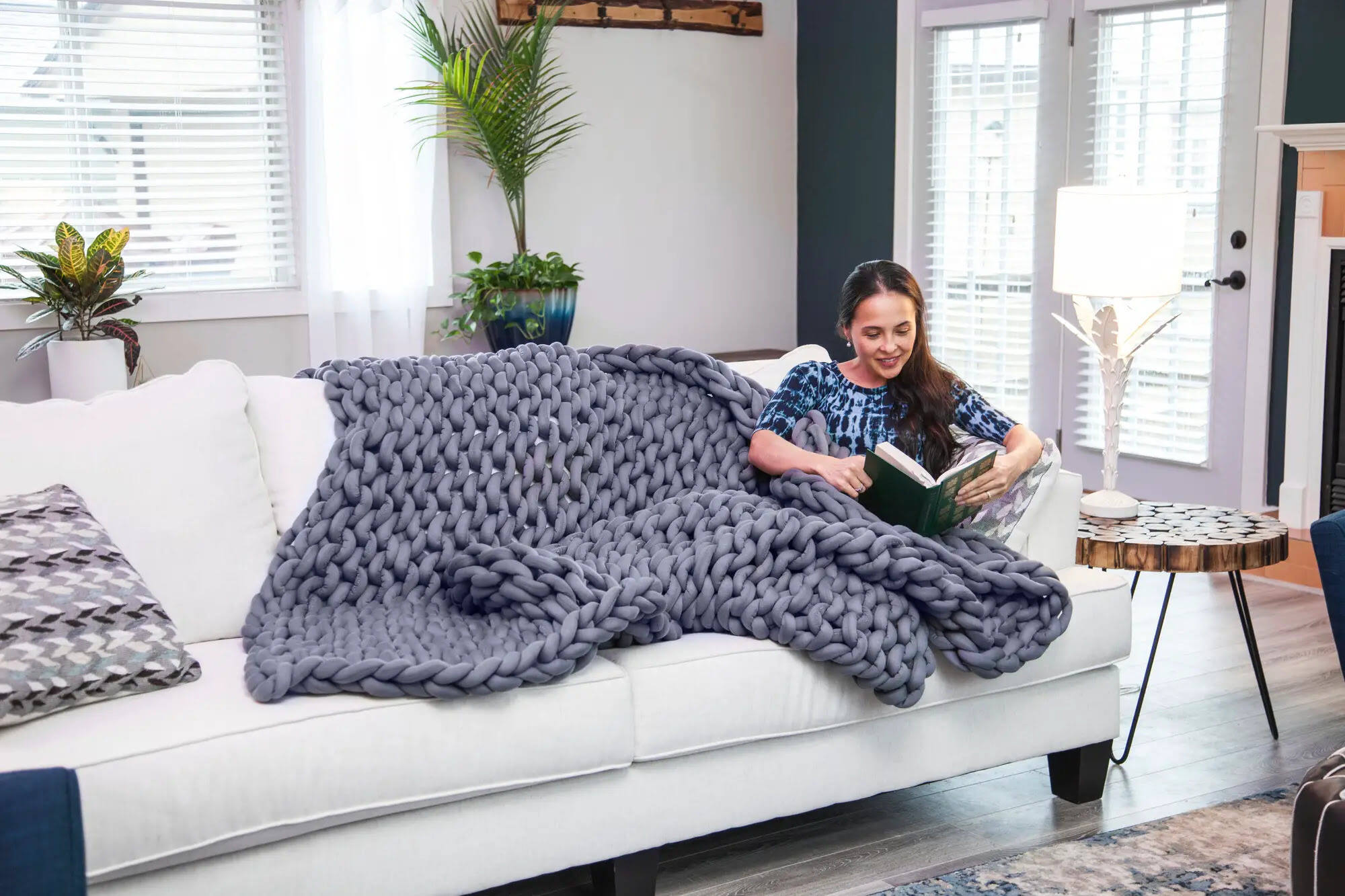

DIY & Crafts
How To Create Weighted Blankets For Sensory Relaxation
Published: February 15, 2024

Content Creator specializing in woodworking and interior transformations. Caegan's guides motivate readers to undertake their own projects, while his custom furniture adds a personal touch.
Learn how to make DIY weighted blankets for sensory relaxation with our easy step-by-step guide. Discover the best materials and techniques for creating your own calming and comforting blankets. Perfect for DIY & Crafts enthusiasts!
(Many of the links in this article redirect to a specific reviewed product. Your purchase of these products through affiliate links helps to generate commission for Twigandthistle.com, at no extra cost. Learn more)
Introduction
Creating your own weighted blanket can be a rewarding and therapeutic DIY project. Whether you're seeking sensory relaxation, improved sleep quality, or a cozy addition to your living space, crafting a weighted blanket allows you to tailor it to your preferences and needs. This comprehensive guide will walk you through the process, from understanding the benefits of weighted blankets to selecting the right materials and sewing techniques. By the end, you'll have a personalized weighted blanket that provides comfort and relaxation.
The soothing pressure of a weighted blanket has been found to offer numerous benefits, particularly for individuals with sensory processing issues, anxiety, or insomnia. The gentle, evenly distributed weight of the blanket can promote a sense of calm and security, helping to reduce stress and anxiety. Additionally, the deep touch pressure provided by a weighted blanket can stimulate the release of serotonin and dopamine, neurotransmitters that contribute to feelings of relaxation and well-being.
Embarking on this DIY project allows you to customize the size, weight, and fabric of the blanket to suit your preferences. Whether you're creating a snug throw for lounging on the couch or a larger blanket for your bed, the process of selecting materials and sewing the blanket provides an opportunity for creativity and personalization. Furthermore, crafting your own weighted blanket can be a cost-effective alternative to purchasing a pre-made one, offering a sense of accomplishment and pride in your handiwork.
As we delve into the steps for creating a weighted blanket, you'll discover the therapeutic potential of this simple yet impactful project. From choosing the right fabrics and fillings to sewing techniques and finishing touches, each aspect of the process contributes to the overall comfort and effectiveness of the blanket. With a bit of creativity and attention to detail, you can create a soothing and personalized weighted blanket that enhances your well-being and brings a touch of handmade comfort to your daily life.
Understanding Weighted Blankets
Weighted blankets are designed to provide gentle, evenly distributed pressure across the body, offering a sense of security and relaxation. The concept of using weight for therapeutic purposes has been embraced for decades, particularly within the occupational therapy community. Originally developed to support individuals with sensory processing disorders, anxiety, and insomnia, weighted blankets have gained popularity for their potential to promote relaxation and improve sleep quality for people of all ages.
The calming effect of a weighted blanket is attributed to deep touch pressure, a type of tactile sensory input that has been found to have a calming and organizing effect on the nervous system. This pressure mimics the sensation of being held or hugged, triggering the release of neurotransmitters such as serotonin and dopamine, which contribute to feelings of well-being and relaxation. As a result, individuals using weighted blankets may experience reduced anxiety, improved mood, and enhanced sleep.
When considering the weight of a blanket, the general recommendation is to choose one that is approximately 10% of the user's body weight. This guideline is often cited as a starting point for selecting an appropriate weight that provides therapeutic benefits without feeling overly burdensome. However, individual preferences and sensory needs should also be taken into account when determining the ideal weight for a weighted blanket.
It's important to note that weighted blankets are not suitable for everyone, particularly infants, young children, and individuals with certain health conditions. Consulting with a healthcare professional or occupational therapist is advisable, especially for those with medical concerns or sensory sensitivities. Additionally, the use of a weighted blanket should be voluntary, and individuals should be able to remove the blanket independently to ensure safety and comfort.
Understanding the therapeutic potential of weighted blankets is essential for creating a personalized and effective blanket. By recognizing the impact of deep touch pressure and the sensory benefits it offers, you can tailor the design and weight of the blanket to suit your specific needs and preferences. As we delve into the process of creating a weighted blanket, this understanding will guide the selection of materials and the overall construction, ultimately contributing to a soothing and beneficial end product.
Choosing the Right Materials
Selecting the appropriate materials is a crucial step in creating a comfortable and effective weighted blanket. The choice of fabric, filling, and additional supplies significantly impacts the overall feel, weight distribution, and durability of the blanket. Here's a detailed look at each component:
Fabric
When choosing the fabric for your weighted blanket, consider both the outer shell and the inner lining. For the outer shell, opt for a soft, durable material that complements your aesthetic preferences. Cotton, flannel, minky, and fleece are popular choices, offering a range of textures and breathability. Additionally, selecting a fabric with a tight weave can prevent the filling from shifting and ensure long-term durability.
For the inner lining, a smooth and sturdy fabric is essential for containing the filling and maintaining the blanket's structure. Cotton or muslin are commonly used for the inner layer, providing a comfortable surface against the skin while effectively securing the filling in place.
Filling
The filling of a weighted blanket contributes to its overall weight and sensory impact. Poly pellets, glass beads, or steel shot beads are commonly used as filling materials, each offering distinct advantages. Poly pellets are lightweight, making them suitable for larger blankets, while glass beads and steel shot beads provide a denser and more compact weight distribution, ideal for smaller blankets.
Consider the desired weight of the blanket and the sensory input you seek when selecting the filling material. Additionally, ensuring that the filling is evenly distributed within the blanket is essential for consistent pressure and comfort.
Additional Supplies
In addition to fabric and filling, you'll need supplies such as thread, sewing needles, and a sewing machine to assemble the blanket. High-quality thread, especially in a color that complements the fabric, is essential for durable seams that can withstand the weight of the blanket. Strong sewing needles capable of handling multiple layers of fabric and filling will ensure smooth and secure stitching.
By carefully considering the materials for your weighted blanket, you can create a soothing and personalized product that aligns with your sensory needs and aesthetic preferences. The right combination of fabric, filling, and supplies sets the foundation for a well-crafted and therapeutic blanket that offers comfort and relaxation.
Sewing the Blanket
Once you have selected the fabric and filling for your weighted blanket, the next crucial step is sewing the layers together to create a secure and evenly distributed weight. The sewing process plays a pivotal role in ensuring the durability, comfort, and effectiveness of the blanket. Here's a detailed guide to sewing the blanket:
Cutting the Fabric
Begin by cutting the outer shell and inner lining fabric to the desired dimensions, allowing for seam allowances. The size of the blanket will depend on your personal preference and the intended use, whether it's a lap blanket for relaxation or a larger blanket for sleep. Ensure that both the outer shell and inner lining are cut to the same dimensions to facilitate even weight distribution.
Layering the Fabrics
Place the outer shell fabric and inner lining fabric with their right sides facing inward, aligning the edges carefully. This creates a fabric "sandwich" with the filling to be added in between. Pin the layers together along the edges to keep them in place during the sewing process.
Sewing the Seams
Using a sewing machine or hand stitching, sew around the edges of the layered fabrics, leaving a small opening for turning the blanket right side out and adding the filling. Reinforce the corners and the opening with additional stitching to ensure the filling remains securely enclosed within the blanket.
Adding the Filling
Through the opening, carefully pour the selected filling material into the blanket's interior. Use a funnel or scoop to guide the filling into each compartment evenly, ensuring that the weight is distributed consistently across the blanket. Take your time to prevent spillage and achieve the desired weight distribution.
Closing the Opening
Once the filling is in place, carefully hand stitch or use a sewing machine to close the opening securely. Ensure that the stitches are tight and reinforced to prevent any filling from escaping. This step is crucial for maintaining the integrity of the blanket and ensuring that the weight remains evenly distributed over time.
Quilting or Tying
To further secure the filling and prevent it from shifting within the blanket, consider quilting or tying the layers together. This can be done by sewing parallel lines or creating ties at regular intervals across the blanket. These additional measures contribute to the longevity and stability of the weighted blanket.
By following these steps and paying attention to detail during the sewing process, you can create a well-constructed weighted blanket that offers consistent pressure and comfort. The sewing techniques employed play a vital role in ensuring that the blanket remains durable, functional, and conducive to relaxation and sensory support.
Adding Weight
After sewing the layers of the weighted blanket together and closing the opening, the next crucial step is adding the weight that will provide the gentle, soothing pressure essential for its therapeutic benefits. The weight of the blanket is achieved through the use of filling materials, such as poly pellets, glass beads, or steel shot beads, which are evenly distributed within the blanket to create consistent pressure across the body.
To add the weight, carefully pour the selected filling material into the blanket's interior through the opening that was previously used for filling. It's essential to approach this step with precision and patience to ensure that the filling is distributed evenly, preventing any lumps or uneven pressure points within the blanket.
Using a funnel or scoop can facilitate the process, allowing for controlled and uniform distribution of the filling material. By guiding the filling into each compartment methodically, you can achieve a balanced weight distribution that contributes to the overall comfort and effectiveness of the blanket.
As the filling material is added, periodically check the weight and distribution by gently shaking and adjusting the blanket. This hands-on approach allows you to make any necessary adjustments to ensure that the weight is evenly dispersed and that the blanket provides consistent pressure when in use.
Once the desired weight is achieved and the filling is evenly distributed, proceed to securely close the opening with careful stitching. This final step in adding the weight is crucial for maintaining the integrity of the blanket and preventing any filling from escaping over time.
By paying close attention to the process of adding weight to the blanket, you can create a well-crafted and effective therapeutic tool. The even distribution of weight achieved through meticulous filling and secure closure contributes to the blanket's ability to provide gentle, calming pressure, promoting relaxation and sensory support.
This step marks a significant milestone in the creation of a personalized and beneficial weighted blanket, bringing you closer to the completion of a comforting and soothing DIY project that can enhance your well-being and daily comfort.
Finishing Touches
With the main construction of the weighted blanket complete, attention turns to the finishing touches that enhance both the aesthetic appeal and functional durability of the blanket. These final steps add a polished and professional look to the blanket while ensuring that it remains a comforting and long-lasting addition to your daily life.
One essential finishing touch is the reinforcement of the blanket's edges. By sewing a sturdy and visually appealing border around the perimeter of the blanket, you not only secure the layers together but also add a decorative element that complements the overall design. This border serves as a protective barrier, preventing the filling from shifting and maintaining the structural integrity of the blanket over time.
In addition to the edge reinforcement, consider adding decorative stitching or quilting to the body of the blanket. This not only enhances the visual appeal but also contributes to the stability of the blanket, preventing the filling from clumping or shifting within the compartments. Whether you opt for simple, straight-line quilting or more intricate patterns, the decorative stitching adds a personalized and artisanal touch to the blanket.
To further elevate the comfort and functionality of the weighted blanket, attaching ties or loops at regular intervals can offer the option of securing a duvet cover. This practical addition allows for easy maintenance and customization, as the duvet cover can be removed and washed separately, extending the lifespan of the blanket and providing versatility in design.
Finally, adding a personalized label or tag to the weighted blanket not only imparts a sense of ownership and pride in your creation but also serves as a reminder of the care and attention invested in crafting a therapeutic and comforting item. A label with your name, the date of creation, or a meaningful quote adds a sentimental touch to the blanket, making it a cherished and unique piece in your home.
By focusing on these finishing touches, you can elevate the weighted blanket from a functional item to a personalized and aesthetically pleasing creation. The attention to detail in reinforcing the edges, decorative stitching, attachment options, and personalized labeling ensures that the blanket not only provides sensory relaxation but also reflects your creativity and craftsmanship. These final touches complete the journey of creating a comforting and therapeutic weighted blanket, ready to bring relaxation and warmth to your daily life.
Conclusion
In conclusion, the process of creating a weighted blanket is a deeply rewarding and therapeutic endeavor that offers a multitude of benefits. From the initial selection of materials to the meticulous sewing and the final finishing touches, every step contributes to the creation of a personalized and effective tool for sensory relaxation and comfort.
Crafting a weighted blanket provides an opportunity for self-expression and customization, allowing individuals to tailor the size, weight, and fabric to their specific needs and preferences. The act of selecting materials, sewing the layers together, and adding the weight fosters a sense of creativity and hands-on engagement, resulting in a tangible and meaningful end product.
The therapeutic potential of weighted blankets, rooted in the concept of deep touch pressure, is harnessed through the deliberate construction of the blanket. By understanding the sensory benefits and the impact of weight distribution, individuals can create a blanket that offers gentle, consistent pressure, promoting relaxation, reducing anxiety, and improving sleep quality.
The completion of a handmade weighted blanket represents not only a practical and comforting item but also a testament to the care and attention invested in its creation. The finishing touches, such as reinforced edges, decorative stitching, and personalized labeling, add a sense of artisanship and pride to the blanket, elevating it from a functional tool to a cherished and unique creation.
Ultimately, the journey of creating a weighted blanket is one of self-care, creativity, and mindfulness. The process allows individuals to engage in a therapeutic and fulfilling activity that culminates in a comforting and beneficial product. Whether used for relaxation, sensory support, or improved sleep, the handmade weighted blanket embodies the care and intention of its creator, offering a source of comfort and well-being in daily life.


